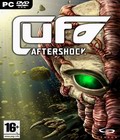Genre: Strategy
Publisher: Cenega
Developer: Altar
Release Date: October, 2005
UFO: Aftermath, the prequel to UFO: Aftershock, you fought the alien race of the Ridiculans in an increasingly futile battle. Now those same aliens have released a "biomass" that has crept over the Earth, corrupting all it touches, even the remnants of the Ridiculan army. Your job is to take back control of the Earth, province by province, to ultimately put it back in the hands of humans, and in order to do so, you have been put in control of a large space station, the Laputa.
UFO: Aftershock consists of two distinct parts: the overhead strategy game and the tactical missions your teams undertake to seize provinces. As part of the strategic game, you can do many things to tinker with your strategy. Base building is one of these, as some of the provinces you acquire will come with a base where you can build structures that you research. Some of the structures opened up through research can, in turn, permit you to pursue new avenues of research. It is crucial to make a mix of research and factory type buildings, as you need both to be successful. You can also build an infrastructure between your provinces in the form of tracks that make resource gathering more efficient.
Also on this level, you can control time by slowing it down, speeding it up, or stopping it entirely. This is important if you want time to go a bit faster so you can acquire a new piece of tech to take along on a mission. There are some drawbacks to speeding through time – your resources get drained quickly, and your enemies bolster themselves.
Speaking of resources, there are three; low-tech, high-tech, and alien. These resources are needed for upkeep, which drains your reserves as time passes. They are also used when producing factories and other such improvements within your base, and they can also be used as diplomatic tribute to your neighbors. The ways to acquire resources are by taking over new provinces or diplomatic tribute. On the strategic map, you can move your cursor over a province to see which type of resource it will contribute to your base, and sometimes, you will be able to find a large cache of that resource in a province, which is always welcome.
Diplomatic relations are another extremely important component in UFO: Aftershock. There are three friendly factions you can talk to: the human survivors, the cyborgs, and the psionics. The only way to recruit new soldiers into your ranks is to trade with these people and request recruits. Each of their units is fundamentally different; for instance, cyborgs use implants instead of armor, and their quality depends on your standing with the race. You can also request and give resources to them. Each race has a preferred resource – low-tech for humans, high-tech for cyborgs, and alien for psionics. If you request resources from a faction and it is their preferred resource, then you will receive substantially more, but when you request resources at all, your standing with that race is reduced to neutral, negating all the work you have done cultivating your relationship with them. Sadly, that is as deep as the diplomatic system goes. I would have liked more options, like those found in the Civilization series.
Research is accomplished through a screen on the strategic map where you can research multiple things at one time, as long as you have the buildings to do so. You have to wait a certain amount of in-game days and hours for the research to become complete. Production is also done this way if you have the proper factories, and more than one item can be queued up to be made.
The most important thing you can do on the strategic map is plan your tactical missions. At first, you only have a handful of recruits, but you can get more, as discussed above with diplomacy. You can arm your soldiers with weapons, armor, and various items like medkits before sending them into the field. When your fighters complete a mission, they are given experience and eventually level up, allow them to increase their stats. The stats that you increase directly affect certain aspects of your character, such as strength, which will make your character stronger in melee, give them more hit points, and allow them to carry more. There are also professions that your recruits can learn once they attain a certain level in their stats. For example, a ranger requires three stats to be at a certain level, so if your recruits meet the prerequisite for this job, then you can put them into training for it, which takes a certain amount of in-game time. This training allows your grunts to either receive bonus skills or additional equipment.
To get to the mission spots, you can select where to move the Laputa, and then if time is not paused, it will move there. Generally, the missions in UFO: Aftershock have you kill a certain amount of enemies, but there are also capture (where one of the enemies is brought back for study) and defend missions. Sometimes, the factions will call out for your help, and you can go to the troubled province and offer assistance, or ignore them. If you do help them, you will enjoy heightened relations with them.
Once inside the tactical level of UFO: Aftershock, you can start scoping out your surroundings by running, crouching, or crawling through the ramshackle environments. The fighting is not turn-based, but it might as well be. It plays rather similarly to Baldur's Gate, where you can pause at any time you want. In fact, sighting any alien will pause the action, but so will a plethora of other events. One would be hard pressed to play through three seconds of a fight without the game pausing. In its defense, you can tweak the options to make fewer things trigger the pause, but it rarely seemed to alleviate the problem. Some of the these triggers, for example, are: soldier has no command, command impossible, enemy sighted, loss of line of sight, and soldier runs out of ammo.
A whole range of weapons can be used in combat, from a katana to laser rifles, with proficiency depending on the warrior's skills. Attacking is as easy as getting within range and clicking on the enemy. You can tell your chance to hit by moving the cursor over an enemy, and if it reads a one or negative number, then you are out of range. Grievous wounds can knock enemies to the ground, stunned or unconscious, but the same can happen to your recruits. Sadly, there comes a time when all commanders face the ultimate loss, the death of a soldier. When this happens, the character is gone forever and must be replaced, but injured units regenerate health as time passes on the strategic map in the Laputa, which I thought was a problem because the regeneration time is quite long, especially if the unit is wounded and on the brink of death.
The graphics of UFO: Aftershock are dated by today's standards and do not warrant the rather long load times. Every once in a while, I saw a particularly gruesome explosion and thought it was groovy, but otherwise, the renderings were bland. The graphics are also not very fluid when it comes to hit detection (i.e., an enemy would sometimes fall over a few seconds after an explosion). Overall, it could have been better.
The sounds certainly suit the game, but will not impress anyone. As with most titles, the sound does not distract from the gameplay itself. I did enjoy the dialogue, though, and it wasn't nearly as cheesy as I would have expected.
There are some problems with UFO: Aftershock, however, the main one being that the missions become repetitive rather quickly. There are tons of tactical missions you must accomplish to conquer the game, but there are only three basic mission types. Sometimes, getting ready for the mission was more exciting and enjoyable than the action itself. Another concern is that there are no soldier formations, so you must individually lead each soldier ahead, or they will lump themselves into a tight group, which is not very conducive to any strategy. There is no multiplayer option to speak of, and the abundant enforced pausing of the game is extremely frustrating.
Overall, UFO: Aftershock is decent but could use a bit of work. The graphics need to be overhauled, the missions need to be more diverse, and I would definitely like to see a deeper diplomatic side to the game. The bottom line, however, is that if you like strategy and micromanaging a lot, you should give this a try, but if you are easily bored, you'd probably want to pass on this title.
Score: 6.8/10
More articles about UFO: Aftershock












 After the alien invasion, the Council of Earth successfully fought the Reticulans and moreover discovered their secret plan: to cover the Earth with "Biomass", a network of alien organic tissue that, the Reticulans hoped, would become conscious and endowed with immense psychic powers. The Reticulans who invaded the Earth are not true representatives of their kind, they are a breakaway faction that burned the bridges and chose this backwater part of space to conduct its experiments.
After the alien invasion, the Council of Earth successfully fought the Reticulans and moreover discovered their secret plan: to cover the Earth with "Biomass", a network of alien organic tissue that, the Reticulans hoped, would become conscious and endowed with immense psychic powers. The Reticulans who invaded the Earth are not true representatives of their kind, they are a breakaway faction that burned the bridges and chose this backwater part of space to conduct its experiments.








































